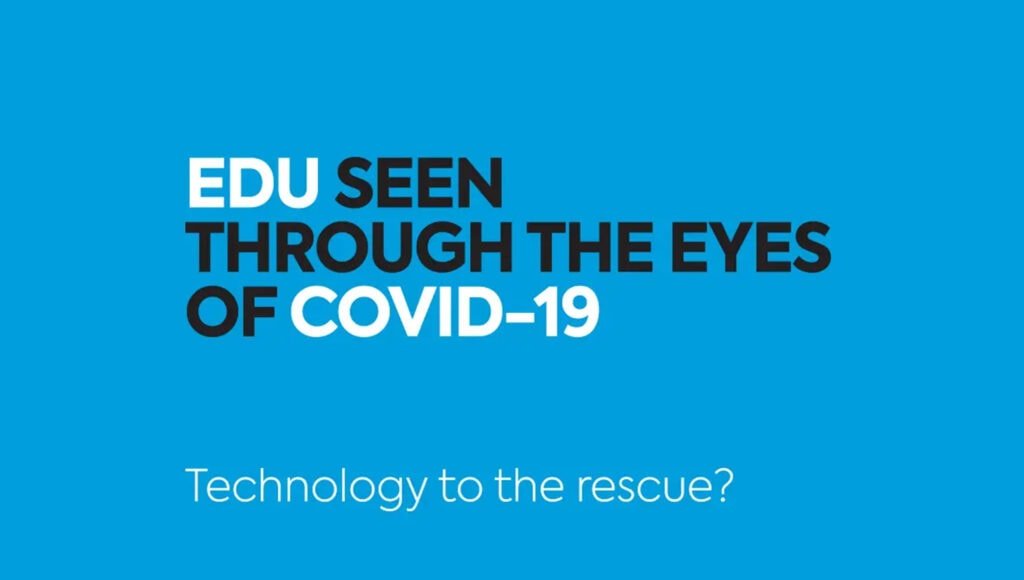World Upended by COVID-19
A year ago, I would not have imagined we would be dealing with COVID-19… a worldwide pandemic. Life has changed. Suddenly I hear people on television talking about telemedicine and distance learning. Seemingly overnight in person meetings became video collaborations. I hear ‘you need to unmute’ or ‘let’s connect on video’. Collaborative video has been catapulted forward in time, achieving what seems like 10 years of advancement in 3 long months. Video is center stage as we are not only dealing with how to combat the virus, but the multitude of ways it impacts our workplace, our educational institutes and family life. Our new reality means we need to find ways to carry on, but stay safe.
Education Transformed and Evolving
Teachers returning this fall will take on a new level of complexity as schools reopen amide a regional spectrum of COVID-19 presence that can quickly change in intensity. Now it is not only important to
have continuity of education and provide the best possible student experience, but this has to be done in the context of mitigating the risk of virus spread. Education and healthcare are inseparable.
School systems are struggling to determine the best ways to open
safely, accommodate students with special risks or needs, and how
to rapidly close or change course if necessary. Technology is set to
step up and provide a reconfigurable new way to communicate
and connect. It facilitates the dynamic educational environment
that COVID demands.
CDC Guidelines on Re-opening Schools
The CDC has provided guidance that addresses many aspects of safely opening schools.* Educational institutes are prompted to think in terms of (low risk) all virtual classrooms, hybrid models (medium risk) where students can participate in class activities over video or online, and (high risk) offering full sized in-person classes. It further suggests staggered attendance, and confining students to the same, small groups that are socially distanced and are practicing safety recommendations. This is all to be decided in the context of the specific community risk. The CDC suggests that schools consider the following as they determine how to reopen:
• how to provide for high risk individuals
• how to set up appropriate screening options
• what to do if a student has symptoms
• what role the nurses’ office may play
• how to dismiss school when necessary
Schools are considering options to address students who don’t have access to the internet or a video platform at home and prioritizing them for in classroom attendance. It is anticipated that schools will likely be fluctuating between all virtual, hybrid models and onsite classroom participation as COVID-19 impacts the community over time. Planning and implementation processes are complex and require solutions that are flexible and can change as needed.
* https://www.cdc.gov/coronavirus/2019-ncov/community schools-childcare/schools.html
Hybrid Solutions for EDU
Schools across the nation are preparing to re-open and many are looking to implement in class live video hybrid models as a way to stay flexible given the changing environment. If students are asked to stay home and quarantine, for example, they can still attend class by connecting over video to the classroom cart-based video conferencing system.
The large, heavy expensive in-room collaborative video solutions for EDU which have struggled over the years to attain widespread implementation make it difficult for schools to quickly and affordable implement hybrid live video solutions for classrooms. New lightweight, easier to deploy cart-based solutions enable schools to create reopening plans that include affordable flexible hybrid models. Students can ‘sit in’ a classroom via a cart based virtual teaching assistant equipped with cost effective professional cameras, mics, and video conferencing software. Flexibility is key to coping with a virus whose presence can ebb and flow. Virtual in class solutions enable dynamic approaches to reconfigure the learning experiences shifting from a hybrid model to a totally virtual model and back again to stay safe.
Going forward it would seem that virtual in class access as well as total virtual educational models will continue to help us all as we try to find the so called new normal. As schools prepare for re-opening, their plans will not only include the normal back to school activities but will also include plans to adjust the learning environment to stay ahead of the virus.
Be safe, stay connected,

Dr. Deborah A. Jeffries
Global Director of Healthcare at Tryten
Dr. Deb has taught high school physics, was a teaching assistant for X-ray, nutrition and physiology at medical school and taught pathophysiology, hematology, and pathology. She has spent 18 years supporting the telemedicine and distance learning industries.
